Posted: May 7th, 2009 | Author: Xu Shengxi | Filed under: creative industries | Tags: autonomous innovation, creative cluster | No Comments »
President Hu Jintao pointed in the 17th National Congress of the CPC that should develop Chinese culture as soft power, as culture is an important resource of improving national cohesion, creativity and comprehensive national strength (Keane 2009, p. 221). Moreover, enhancing cultural industry which is considered as soft power can help to ensure essential cultural rights of Chinese citizen, it also adapts to government’s policy in improving human rights (Keane 2009, p.221). China has been labelled global manufactory for a long history, as Keane (2009, p.221) mentions that China put forward “autonomous innovation†in order to transform from ‘Made in China’ To ‘Created in China’.
SWOT method also can be use in analysing the current developing situation of creative industry in China.
Strengths: Chinese traditional culture has a strong power when it faces to western culture. As Keane (2008) pointes that China joined in WTO in 2001, however, the phenomenon of western culture invasion which was circulated did not emerge. Compare to advanced creative countries, China has a short history of creative industry but now has a strong governmental policy to support. Take a small city, Jiaxing of Zhejiang province (my hometown) for example. Jiaxing is well-known as it is a famous land of milk and honey in southeast China. As the south of the lower reaches of the Yangze River, Jiaxing takes advantages of its historical background and traditional culture, presents in some parts of urban structure, like lakes, alleys, stone road and house with wood construction.
Meiwan Street has been using since 2006, it retains a lot of traditional folk house of southeast of China and then makes some modern modifications. It mainly established many architecture of pseudo-classic style. In term of commercial aspect, the cultural cluster constitutes restaurants, handmade article shops and book store. In term of heritage, Meiwan Street maintains former residence of Zhu Shenghao, the people who translated Shakespeare’s works in modern China, additionally, retains the site of temporary Korean government in war time. Meiwan Street becomes a cultural creative cluster which gathers tourism, restaurant and entertainment. Every year it will holds many kind of cultural pageant like Chinese traditional Lantern Festival. Inosculating profound humanity history and commercial programs as well as architecture is the suitable method of developing creative industry in small city like Jiaxing. Furthermore, the flourishing of Meiwan Street drives the attention and price of the Real Estate program named Dongling Meiwan Garden which near to Meiwan Street.
Historical heritage: lakes, alleys, stone road and house with wood construction (picture from internet)
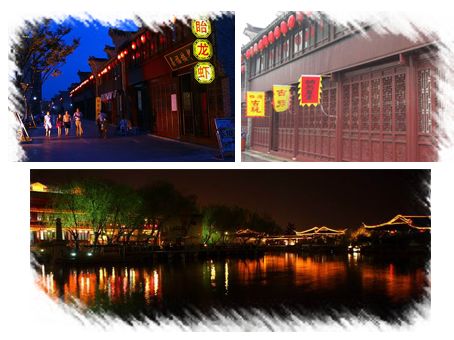
Cultural Creative cluster: tourist industry and catering industry (picture from internet)
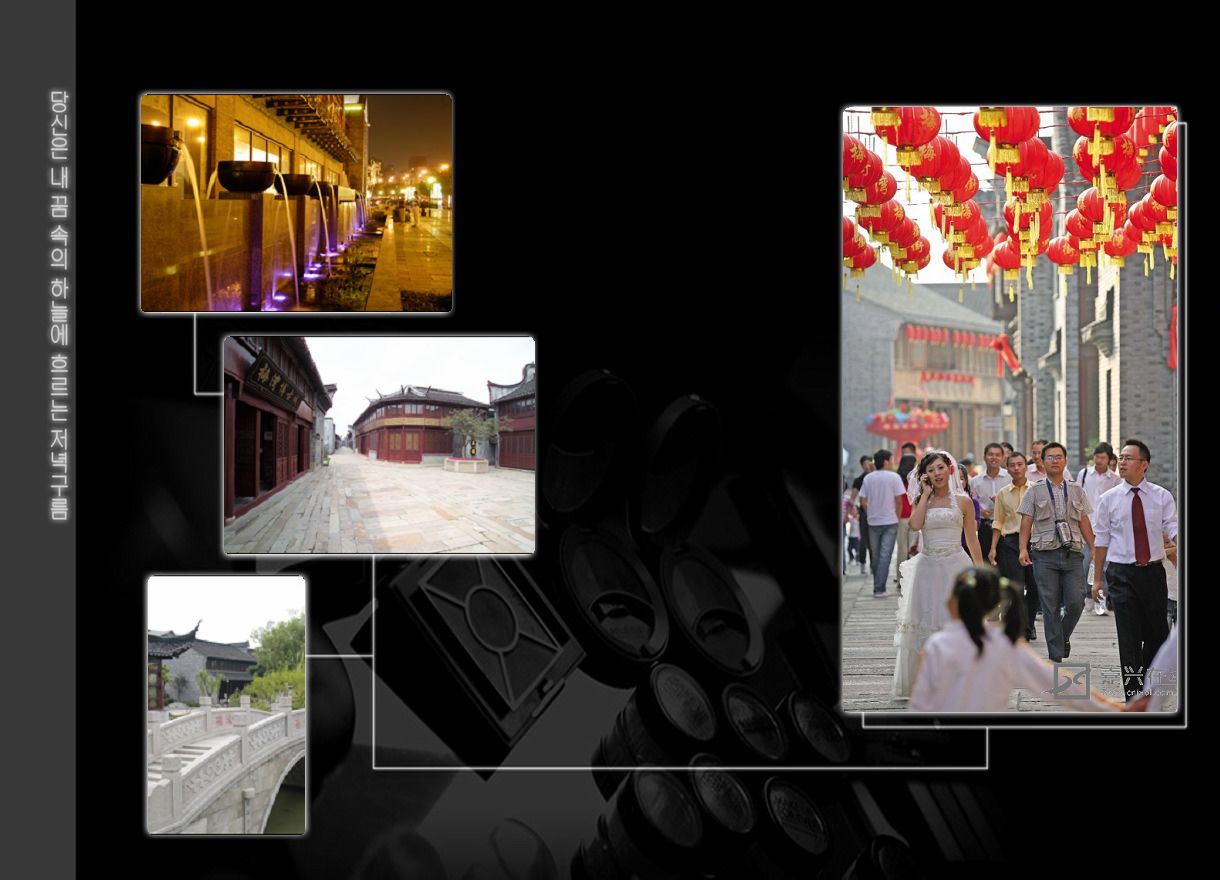
To sum up the above example about Meiwan Street, the way of combining geographic economy and culture together can be the effective form of transforming economic system under the guidance of Eleventh Five-Year Plan (Keane 2009, p.222). As Keane (ibid) considers that the creative industry with Chinese characteristics absorbs local and traditional culture.
Weaknesses: Firstly, some governments develop local creative industry impetuously and sightlessly, and they plagiarize exotic instead of creating their own ideas (Chen 2008). For instance, animation industry in China has a relatively low quality through it develops rapidly in recent years. Secondly, profound Chinese culture, to a certain degree, has been ignored and considered as out of fashion culture.
Threats: As Keane (2009, p.223) claims that United Kingdom, which is the advanced creative country, chandelle Chinese creative industry in post-WTO time according to its soft cultural invasion.
Opportunities: Keane (2009) mentions WTO brings chance to creative industry of China accompany threats. The benefits from developing creative industry are apparently, it increases wealthy, promotes urban spatial restructure, developing traditional culture and to a certain degree, it contributes to solve social problems (Keane 2008). According to the gatekeeper of Shanghai Media Cultural Park, the reuse of disused old factory benefits the retired and unemployed worker of original Shanghai Window Hook Factory. In other words it provides job opportunities and contributes to social security.
In term of my essay question, the relationship between the development of creative cluster and urban spatial structure, it is a mode of spreading point-to-area. For example, a new creative technology park could absorb relative creative labour which leads to population flow. Population flow drive establishment of various facilities, such as entertainment, education, company, tourism and eating trade, etc. Creative cluster which based on culture, it is also an economic district, could form a remarkable geographical position which contributes to the urban structure.
References:
Keane, M 2009, ‘Great Adaptations: China’s Creative Clusters and New Social Contract’, Journal of Media & Cultural Studies, vol. 23, no.2, pp.221-230
Chen, S F 2008, Ten Mistaken Ideas of Creative Clusters, China Academic Journal Electronic Publishing House.
Posted: May 7th, 2009 | Author: Fu Hanqing | Filed under: creative industries | No Comments »
The research of ‘Labor, Migration, Creative Industry, Risk’ done by Neilson (2008) mainly focuses on the relationship between migrant networks and creative industry. Migrant networks in China consist of Chinese migrant workers and foreigners. For the former, it seems that the relationship between migrant workers and creative industry is not very obvious. Migrant workers usually engage in manual work, but creative work is always mental labor. However, the deep relation should be dug. Both infrastructure construction of creative industry and exploiture of real estate which accompanies by the development of creative industry need a flood of cheap labor, Ned & Neilson (2008) also indicated in ‘Precarity as a Political Concept, or, Fordism as Exception’. Large influxes of migrant works solve the problem of a lack of labor force. For the later, as a special part of the migrations, foreigners who have professional knowledge have become a new power and bring international influence to creative industry in China. The cause-effect chain in these relations can be described as follows: cheap labors support the development of real estate, and then the development of real estate invests the creative industry. And the prospering creative industry offers a large amount of jobs for migrations, but drives original inhabitants. Ned & Neilson (2008 p.61) further point out that creative industry has a large capacity that ‘the highly diverse composition of precarity gathered around the sign of creative labor’.
Ross’s study of ‘The New Geography of Work: Power to the Precariou’s (2008) concerns about the features and conditions of migrant workers in creative industry. She points out that migrants play important roles but are always low-skill workers in creative industry. There will be no guarantee of their work condition and rights. However, their precarity can help escaping the state’s strictures and capitalist discipline.
Be different from the authors above, in the article of ‘Migrant Workers, Collaborative Research and Spatial Pressures: An Interview with Meng Yue’, Ned & Meng Yue (2008) place the migrant workers to a broader social space and discuss the creative life of migrant workers in the edge of the city. A great number of migrant workers assemble in the periphery of the city. However, their attitudes of the edge are quite complex. On one hand, they do not accept the edge as their home and do not want to locate in this place. Some of them hope to go back to their hometown, and others dreamed of melting into the real urban life. On the other hand, migrant workers recognize this life style to a certain extend. They always bring their folks. In addition, they tend to use something related to their works to beautify their environment. These can be considered as methods to express their life.
Neilson, Brett and Rossiter, Ned (2008) ‘Precarity as a Political Concept, or, Fordism as Exception’, Theory, Culture & Society 25.7/8: 51-72.
Neilson, Brett (2008) ‘Labour, Migration, Creative Industries, Risk’, Urban China 33: 42-43.
Ross, Andrew (2008) ‘The New Geography of Work: Power to the Precarious?’, Theory, Culture & Society 25.7/8: 31-49.
Rossiter, Ned and Meng Yue (2008) ‘Migrant Workers, Collaborative Research and Spatial Pressures: An Interview with Meng Yue’, Urban China 33: 44-47.
Posted: May 6th, 2009 | Author: Shui Jing | Filed under: creative industries, real-estate | Tags: Ningbo | No Comments »
Keane (2009) believes that in China, creative industry park could divide into three types.
First of all, some creative industry parks close to the university. On one hand, they can anticipate the reputation of university to enhance creative park popularity. On the other hand, they can rely on creative talent and knowledge in college or university to improve quality of creative products. In Ningbo, the Innovation Valley is exactly a good case. In 2009, Innovation Valley and five surrounding universities such as Ningbo University and Ningbo Engineering College etc had signed contracts with Innovation Valley .Later they will develop their wisdom to Innovation Valley.
The second mode is the most common pattern and it is to preserve the old factory. To some extent, it has not only retained historical building, but also stimulated the imagination of artists. For example, Loft 8 in Ningbo was Ningbo Fangxiang Factory before.238 Creative Park was Ningbo Tianyi Toy Factory.
The last mode is the creative industry park and it is constructed with completely new. Generally, it is driven by government policy. This mode is also extremely wide spreading in Ningbo. Wealth and Creative Harbour, DIY City in Cichen were shaped by government planning.
On the whole, as Keane (2009) pointed out, through the operation from real estate developer, creative cluster had realized their real value in well organized on old buildings and city planning by real estate developer and government.
Van (2009) also proved that, social capital of creative industry took advantage from cluster. The transaction costs were reduced during face to face contact. For instance, search costs and process of bargaining were decreased.
Liu&Li(2006)have come to the conclusion that, the level of urbanization of Ningbo city is belonging to the forth rank. In other words, Ningbo has lower urbanization than other cities. They used spatial aggregation, economic development, social development these aspects to measure some sub-provincial cities like Ningbo. Cooke& Lazzeretti (2008) reports that, the higher level of urbanization result in intimate relationship with the world in creative industry. Therefore, as the present situation of Ningbo, Nie&Wang (2008) analyze on four aspects of problems that exist in Ningbo creative industry. Firstly, overvalue on business however overlook on culture. This is a problem appeared on concept aspect. Secondly, management confusion, this is a problem belonging to government system. Thirdly, creative industry is lack of policy to support, such as tax revenue and government grant. Finally, Ningbo creative industry is professionals’ scarcity that both on designer and manager.
References
Cooke,P&Lazzeretti,L(eds) 2008,Creative Cities, Cultural Clusters and Local Economic Development, Edward Elgar Publishing,UK.
Keane,M 2009, ‘Great adaptations: China’s creative clusters and the new social contract’, Journal of Media &Cultural Studies,vol.23,no.2,pp.221-230.
Liu, Yanjun&LI, Chenggu 2006, ‘Research on urbanization level of urban regional centres evaluation’, Journal of Economic Geography, vol.26, no.2, pp.225-229.
Nie, Jinglei& Wang,Qiuyan 2008 The Survey on Current Situation of Creative Industry and Development Stratagem in Ningbo. Journal of Market Modernization,Vol.561, no.12,pp.213-215.
Van Heur, Bas (forthcoming 2009) ‘The Clustering of Creative Networks: Between Myth and Reality’, Urban Studies 46.9.
Posted: May 6th, 2009 | Author: Xu Shengxi | Filed under: creative industries | Tags: creative cluster, creative industry, urban spatial structure | No Comments »
Creative industry was established for solving problem of unemployment in post-industrial time, as Ned Rossiter (2008) mentioned in Creative China: Counter-Mapping Creative Industries’, it covers communication, advertising, music and urban developing areas which can be regarded as “new economyâ€. Compare to developed countries where has matured developing scale of creative industry like UK and Australia, China started to develop creative economy after Eleventh-Five Year Plan (ibid). The rise of creative industry in China leads to the emergence of a new form of economy which called creative economy (Hong 2006, p.38).
Although creative industry such as advertising and communication industry seem as sunrise industry in contemporary China and absorb numbers of young adults full of passion, it faces to many barriers and difficulties according to the reality of China. China is now experiencing a complicated transitional period in economic, urban and social areas (Rossiter, 2008, p. 25). As Adrian Blackwell (2008, p.50) considers there is a gap between “strong central government and weak regulatory frameworkâ€. To a certain degree it helps to promote the efficiency of socialist market economy operate in international market, however, disadvantages appear in many areas like urban spatial structure, urban-image building and even creativity of creative industries in China (Blackwell, A 2008, p.50& Chen, 2008, p.18).
The development of creative industry in China, to a certain degree, is becoming the pronoun of real estate. As Shaofeng Chen (2008, p.18), the assistant dean of Institute for Cultural Industries of Pecking University claims that there is a mistaken idea in the growth of creative clusters in China. He mentions that creative industry is usually operated as real estate program according to governmental policy about land supervision (ibid). It leads to the transition of creative cluster from Creative Park to Real Estate Park, and weakens cultural power as well as distorts the original meaning of cultural creativity though it brings economic profit (ibid). Professor Ned Rossiter (2008, p.52) considers big city like Beijing has its certain scale of creative industry, however, they contribute much more on driving price of real estate than on improving their creativities. Creative clusters seldom create new ideas; they even become image-program of government (Rossiter 2008, p.52 & Chen 2008, p.18).
Nevertheless, creative industry spring up in China result in positive transition of urban structure of China. In term of capital investment, it influences anthropology flow because creative industry gathers human ideas and creativities. As Professor Ned Rossiter (2008, p.24) claims that the restructure of various districts will happen in a certain scale. Adrian Blackwell (2008, p. 48) considers in today’s China there are two basic extensions mode of urban outer suburbs, which are “poorly controlled village intensification and expansive new development zonesâ€. In some cities which have a development scale of creative industry, like Beijing and Shanghai, the new economic form which have the basis of urban historical heritage create new profits, for instance 798 in Beijing and Tianzi Fang in Shanghai. This kind of urban heritage is labelled history and Chinese characteristics, moreover, they are reformed as the new artistic space for consumption. As the first creative cluster based on disused factory in Ningbo, Loft 8 gathers design studio, advertising company and DIY (do it yourself) space, etc. According to the introduction from Zane Zhu, the host of No Space in Loft 8, there are many artistic exhibitions taken there, such as paintings and photographs. The development of Loft 8 has its success, however, as Zane Zhu mentioned it still has inadequate attention from the public, and it hasn’t combined with commercial activities. In term of newly creative development zone, take the first creative technology park for example, it locates in Ningbo University Park and has access to get abundant recourses like soft company. It can be seen as “a cultural archipelago†(Blackwell 2008, p.48). Although there is a big distances between big cities where a large scale of creative development has, how can urban spatial structure achieve in Ningbo and to what extent can become reality? Ningbo has its advantages in location and economic development, moreover, its cultural background is profound. Does the creative cluster in Ningbo can contribute to the urban spatial restructure? To what extent they can? This is the question I want to evaluate in my essay.
Loft 8, Ningbo, based on disused factory
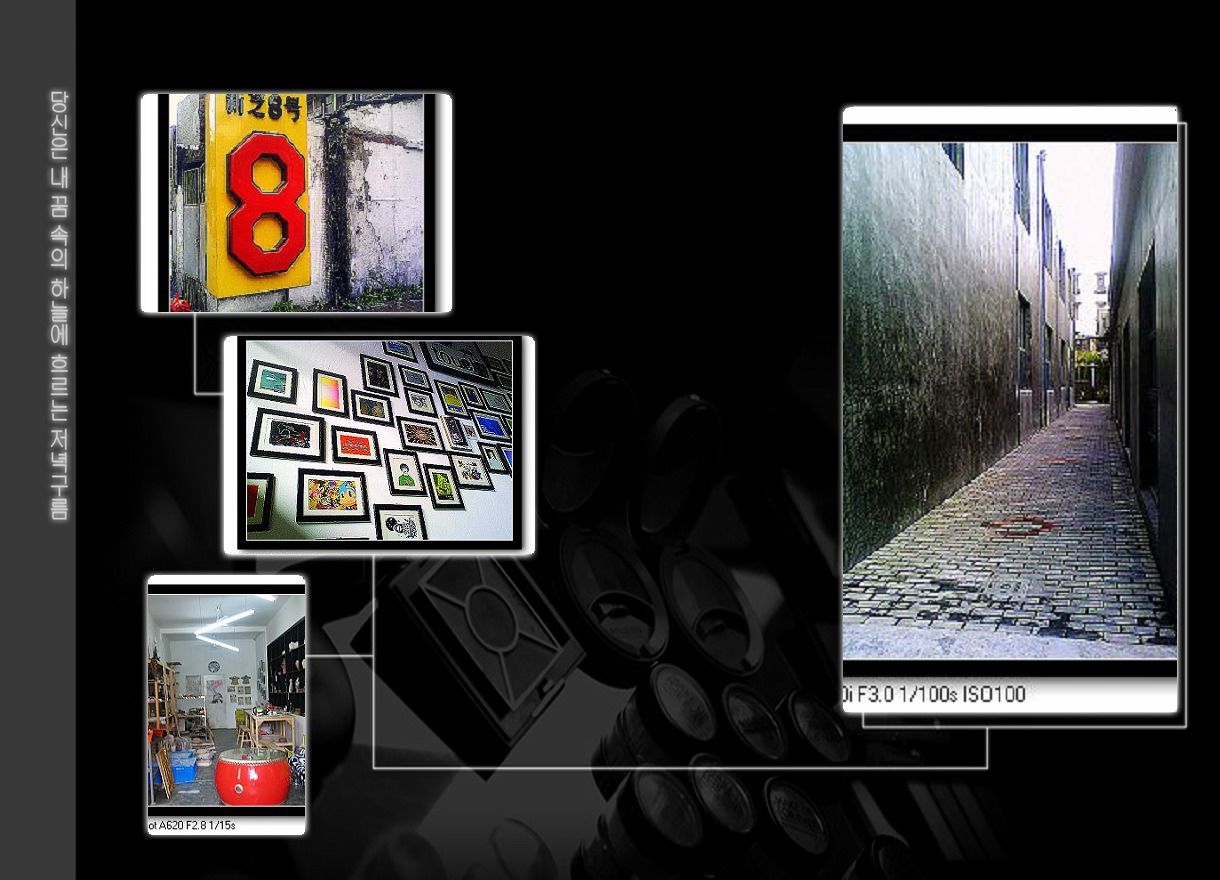
Tian Zi Fang, Shanghai, old alley but new creativity

References
Blackwell, Adrian (2008) ‘Inverting the Cultural Map: Peripheral Geographies of Beijing’s Creative Production’, Urban China 33: 48-51.
Carriço, Mónica; de Muynck, Bert; Rossiter, Ned (eds) (2008) Urban China 33 [Special Issue: ‘Creative China: Counter-Mapping Creative Industries’].
Chen, S F 2008, Ten Mistaken Ideas of Creative Clusters, China Academic Journal Electronic Publishing House.
Hong, L 2006, Creative Industry and Creative Economy, Friend, vol.10, pp.38-39.
Ned, R 2008, Informational Geographies vs. Creative Clusters, Urban China, vol.33, pp.32
Posted: May 5th, 2009 | Author: Shui Jing | Filed under: creative industries, real-estate, theory | No Comments »
According to Van (2009), at present, the network cluster formed with accumulation regime. Additionally, creative cluster is the sub-cluster from industrial clusters.
There are some connections between urban development and competitive power ,when one company was classifying into creative industry spatial agglomeration.
Van mentioned, originally, in Berlin, some real estate of important creative cluster was organized by shareholder project format. Afterwards, from 2004 it’s transformed into ‘regional management’. In other words, the government intervenes in this area and begins to corporate with real estate developer.
In London, even the spatial clusters were sorted out ambiguously, the tendency of creative cluster is exist.
Van also uses Maskell(2001) notes to analyze cluster and development in creative industry from the three aspects.
First of all, some firms are willing to relocate or partly relocate into cluster for potential customers in such area. For example, the Magazine of Urban China relocated their Shanghai Branch office instead of moving in one of creative industry park in Yangpu District.
In addition, some dominant tendency also will lead some firms to think about what sector of creative industry they should get involved in. Give an example, In Ningbo, the project of Industrial Design and Creative Park will give lots of opportunity for design studios and advertising companies. Owing to this creative park already have some relationships with manufacturing companies in Ningbo. According to Hu (2009), on account of the small medium scale manufactures in Ningbo had developed very well. However, if they want achieve better performance; the reality is that their ability is limited for reason of lack of industrial design skill. Therefore, in such situation, design studios in the Industrial Design and Creative Park will definitely have closed relationship with these enterprises. In other words, small medium scale manufactures could benefit from design and their products appearance will be showed in such creative park. In the end, products will get great demand. On the other hand, design studio also could through these designs to demonstrate their strength and gain money.
Finally, the phenomenon of new firms as the spin-offs in cluster becomes more and more common in daily life. Because of technical shift and commercialization, such companies are the good places for staff to expand their imagines and creativity. Do those company forms appear in Ningbo? Next step, I want to interview some persons and figure it out.
One of blueprint of Ningbo Industrial Design and Creative Park

Van Heur, Bas (forthcoming 2009) ‘The Clustering of Creative Networks: Between Myth and Reality’, Urban Studies 46.9.
Hu, Haizhong & Xiao Yingzhe 2009, ‘On interactive relationship between Ningbo constructing industrial park and developing small-medium scale manufactures’, Journal of Zhejiang Wanli University,vol.22,no.1,pp.83-86.
Posted: May 5th, 2009 | Author: Fu Hanqing | Filed under: creative industries | Tags: Ningbo museum | 1 Comment »
Ningbo museum is located in the south east district of Ningbo city, with an area of about 4 hectares, a floor area of about 30000 square meters and 16,000 collections. It is one of the eight cultural projects which Ningbo government majorly constructed. Drawing upon its two major advantages, creative architecture and creative exhibitions, Ningbo museum came to the fore in China which has all kinds of museums.
Ningbo Museum, 1000 Shounan Road (M), Yinzhou, Ningbo, China

Creative Architecture
The style of architecture of Ningbo Museum is called ‘new interpretative attitude’. The idea of this style do not venerate the unchanging design patterns but stress to use local materials and methods in design. Ningbo museum is laden with a lot of cultural information of Ningbo. First of all, Ningbo museum is architecture of ‘half mountains and half houses’. The building has a list to the south which symbolized the local landform of mountain. An expanse of water traverses the major entrance, rounding the whole building. It indicates the development of Ningbo from ferry to estuary and thence to port.
Expanse of Water & ‘half mountains and half houses’
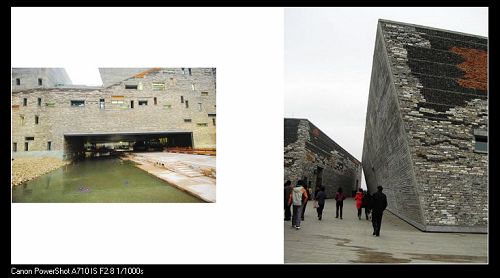
Secondly, the main attraction of this museum is the ‘tile wall’ and special concrete wall. Millions of old tiles, involving blue bricks, keel bricks and tiles, since Ming and Qing dynasties were used to build up this museum. The meaning of this tile wall is equal to the idea of ‘collecting history’. Besides, the special concrete wall is made up by displaying the grain of bamboo on the wall. Bamboo can show the typical characters of the culture of south Yangzi River and impose the historical information. With this style of architecture, Ningbo museum itself becomes an exhibit.
Titles Wall & Bamboo Concrete Wall
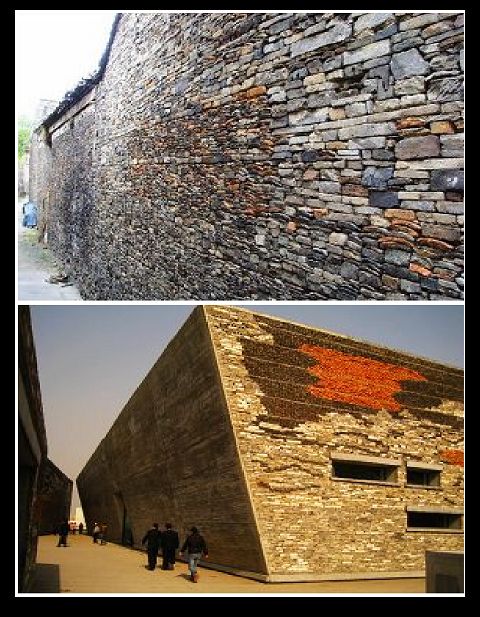
Creative Exhibitions
There five major exhibition halls to fully display the history and culture of Ningbo. The first one is the display of Ningbo history. Four specialties should be pointed out. Firstly, the structure of showing the history bases on the ecological construction which considered the historical development as the Y-axis and the turning points as the X-axis. Secondly, Ningbo museum uses the historical materials to support the display and cultural relics to provide the display. Thirdly, new technologies are used in exhibitions to deepen the understanding and feeling of visitors. Last, the geographic features of Ningbo gave prominence to the theme of ‘water’.
Ecological Construction & Historical Materials
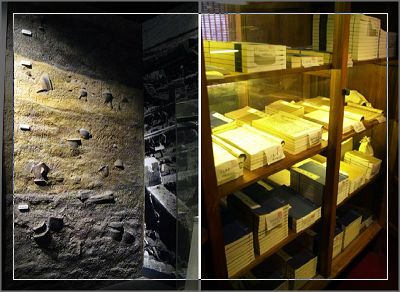
Multimedia & the Theme of Water
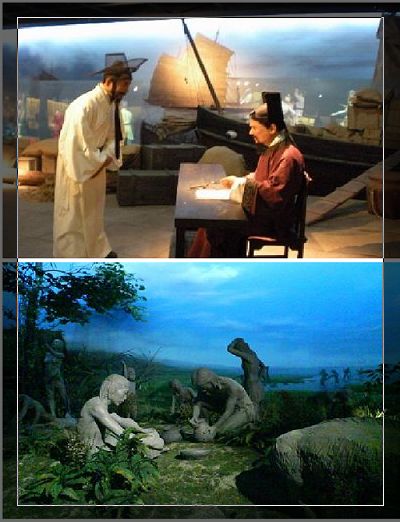
The second exhibition hall is bamboo carvings. This exhibition hall displays traditional culture from both form and content. From the perspective of form, the Chinese traditional method of ‘borrow scenery’ and traditional exhibition shelves is applied in display to heighten visual effects. From the perspective of content, these collections are ‘the most important bamboo carving collection extant in China and is definitely ranked the top level of its kind whether judged by quality and quantity’ ( Shixiang & Jiajin n.d.)
‘Borrow Scenery’ and Traditional Exhibition Shelve
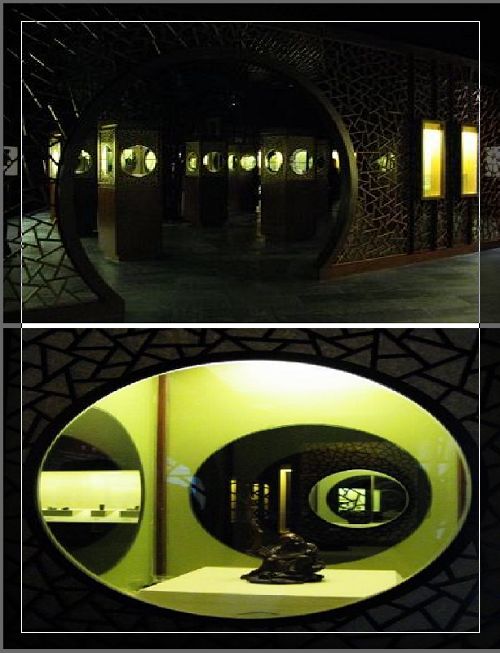
The third exhibition hall is the display of Ningbo customs consisted of Ningbo old-established brands, Ningbo wedding customs, Ningbo houses, Ningbo calendar, Ningbo craftsmanship and Ningbo opera and dialect. All these customs were the hallmark in Ningbo history and culture.
Ningbo Customs.
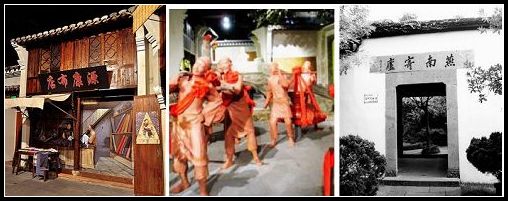

The remaining two exhibition halls are respectively special exhibition of royal jewel and art works donated by Shao keeping. Special exhibitions always changed with the plans of display.
Princes Gold & Silver Works
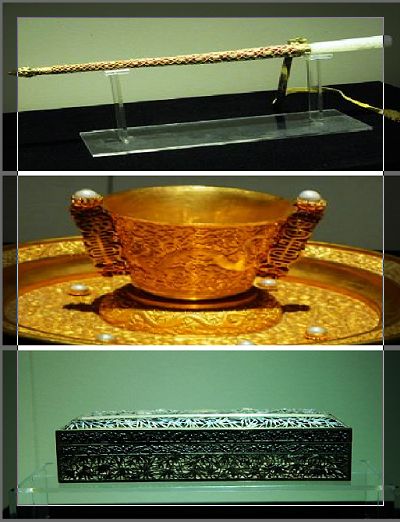
With these creative elements, Ningbo museum has become a particular cultural palace where people understand history and learn more about the world.
Posted: May 4th, 2009 | Author: Shui Jing | Filed under: creative industries, real-estate, theory | Tags: Add new tag, urban network | 1 Comment »
What do the features of spatial cluster or the spatial agglomeration mean? Evaluating with references such as Van to discuss how Ningbo’s creative industry connect with urban development.
Posted: May 4th, 2009 | Author: Fu Hanqing | Filed under: creative industries | Tags: peripheral geography creative production | No Comments »
Be different from North America and Europe, creative clusters of Beijing were always at the edge of the city. These were many factors for this phenomenon. Firstly, experimental artists gathered spontaneously at the outer regions. Secondly, the unstable political situation further made the artists migrate obscure places. Last but not least, the government made an important role. It made comprehensive plans for the distribution of creative clusters in the urban periphery.
There were two modes of ex-urban sprawl. One was village intensification. Local peasants did not have the proprietary rights of land. They just developed it and rented the houses to migrate workers through informal ways. These migrants usually worked in the labor intensive creative industries, such as serving vacation village, constructing art villages and so on. The other was expansive new development areas. These included artist’s villages, art gallery and art districts, software parks, leisure spaces, conference hotels, spas and theme parks.
It should consider of the opportunities and challenges from four perspectives. First of all, the creative industries were scattered to the out regions of the city. At beginning, artists’ choices of renting the edge of the city were because of the low rent. However, with the development of houses and studios at the edge, the phenomenon of luxury housing here were more and more obvious. And the creative production was even controlled by governments and real-estate developers. Fortunately, the cultural diversities in Beijing’s periphery can lead to new understanding and developmental modes for people to periphery. Secondly, Beijing government tolerated migrant workers to reside in the villages which are developed illegally because migrant workers contribute more to the urban economy. Thirdly, international and Chinese labor force congregated in the urban periphery. The collisions of diverse experiences, skills and talents of international and Chinese labor force provided a huge potential for innovation. Fourthly, the combination of the powerful central government and the weak regulatory framework offered opportunities for urban development. The strong government guided the developmental direction and ensured the implement of policies while the weak regulatory framework created chance s for migrant workers to empower themselves, achieving equal rights.
References
Blackwell, Adrian (2008) ‘Inverting the Cultural Map: Peripheral Geographies of Beijing’s Creative Production’, Urban China 33: 48-51.
Posted: April 19th, 2009 | Author: Vicky | Filed under: creative industries, theory | No Comments »
According to Sassen (1991, 1994), the theory of “global city†means that the new role of the city in the global economy and defines a city in terms of the strategy function and the connection in the world network. Sassen also mentions about the reason of the phenomenon of increasing clusters in this connected digital world. The answer is specialized function. For example, over 40 percent of Fortune 500 companies have their headquarters in New York City. A lot of these firms are not in New York and over 60 percent of their revenue in overseas sales. This is not only in terms of the design-oriented manufacturing, but also in terms of highly specialized services, such as financial, accounting, design and management consulting and so on.

Base on this theory to examine the fieldwork in Cicheng, we also can see the same situation. The local government uses the history of 1000 years and ancient architectures in this old town and also inivite specialized consultant to provide the local companies the new opportunity to created new business. They tried to integrate the local heritage and the resources of traditional industries to build up a theme economy of DIY and new brand image for both of them. A new theme cluster is constructing.

Â

Posted: April 17th, 2009 | Author: Fu Hanqing | Filed under: creative industries | 1 Comment »
By reading the materials and researching on the migrant workers in Ningbo, I found that I was interested in the study of mingrant workers. So, I changed my topic.
This essay will discuss the features of migrant workers in the era of Post-Fordism and consider that as the subject of Post-Fordism, how the migrant workers relates to the development of creative industries in Ningbo.


















Recent Comments